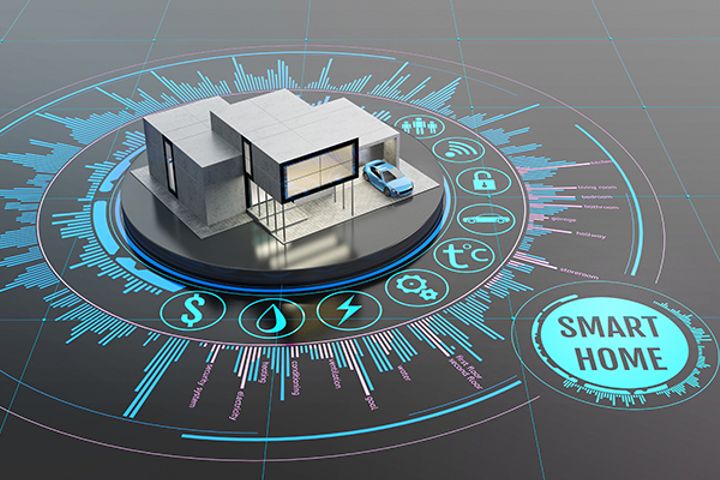 High Prices, Lack of Industry Standards Bedevil China's Smart Home Market
High Prices, Lack of Industry Standards Bedevil China's Smart Home Market(Yicai Global) Jan. 31 -- China's home automation field has attracted many leading domestic and international brands, but high prices, the absence of uniform industry standards and products that are complicated to operate have prevented the market from achieving the same level of penetration the mobile internet and smartphones did a few years ago.
Most consumers Yicai Global interviewed said smart home products are overpriced considering their performance and the limited degree of automation they offer. Comprehensive automation systems with intelligent sensing, interactive and self-training features tend to be expensive.
Many consumers think smart home products are not user-friendly and are "unaffordable" and unreliable, per a survey an online portal conducted.
Among last year's bestselling clothes drying racks, a regular auto drying rack cost slightly more than CNY100 (USD16). A telescopic rack with a smart remote control and lighting features and went for over CNY1,000. Some with additional functions such as air-drying, storing and disinfecting ones sold for upwards of CNY2,500.
These prices are 'e-commerce prices,' and buying offline is typically more expensive. Large houses and apartments, as well as homes with many smart devices, need to use a dedicated connection to make sure their gadgets are always online. Connectivity issues have led to poor user experiences and pushed some consumers to ignore fancy features and operate devices manually.
Many smart home products are remotely controlled by cellphones, but this model is flawed, said Viomi Electric Appliance Technology Co. Chief Executive Chen Xiaoping. "What we need is an array of products and use cases that are interconnected via the Internet of Things," Chen said.
The development of the home automation technology can be divided into three stages -- automation devices, multi-product interaction and intelligent systems. The scenario that Chen envisions is based on intelligent systems. Products available in the Chinese market are first stage ones.
Most market participants are aware of the importance of product harmonization, and telecommunication carriers, internet companies, traditional appliance manufacturers and suppliers have developed their own smart home ecosystem platforms. However, protocol harmonization is limited to products within separate ecosystems as firms are unwilling to share their platforms and databases.
The global smart home industry lacks uniform standards, and companies guard their protocols as private property. Given the long industry chain of the home automation market and the large number of parties involved ranging from upstream chipmakers, parts providers and midstream appliance makers and security firms to downstream platforms and service providers, drawing up a single set of standards that is accepted by all market players is difficult.
Several agencies including the Ministry of Public Security, Ministry of Science and Technology, Ministry of Industry and Information Technology, and Standardization Administration regulate the market, so coordinating business practices in the industry in a few months is impossible, China Smart Home Industry Alliance Secretary-General Zhou Jun said.
"The China Household Electrical Appliances Association has been trying to develop an interconnection solution for home appliance products, but interconnection has so far remained at a basic level -- switching air-conditioners on and off, for example," Zhou said. "Companies are reluctant to share their technology and platforms to enable cross-platform control at a deeper level."
Despite challenges, businesses are still bullish about the future of home automation. "One thing that sets smart appliances apart from traditional ones is that the former's self-training capability -- based on Big Data or artificial intelligence -- can be continuously improved through iterative upgrades and updates," Viomi Electric Appliance Technology's Chen said.
"Even difficulties in device interconnection are not a problem because they can be solved by software engineers by adding some code or an interface," said Chen. "It's only a matter of time. It's analogous to dressing. We put on clothes one by one, and we can always get new and better ones to replace the old ones."
China's smart home market will likely report CNY90.8 billion of output for last year and it witness a compound annual growth rate of 48 percent from 2017 to 2021, per the White Paper on Smart Home Applications in China released at the recent Smart Home Industry Innovation Summit. Some 120 million Chinese families will use smart home furniture and services by 2021, when the market volume will surpass CNY436.9 billion, accounting for one fourth of the global total, it said.